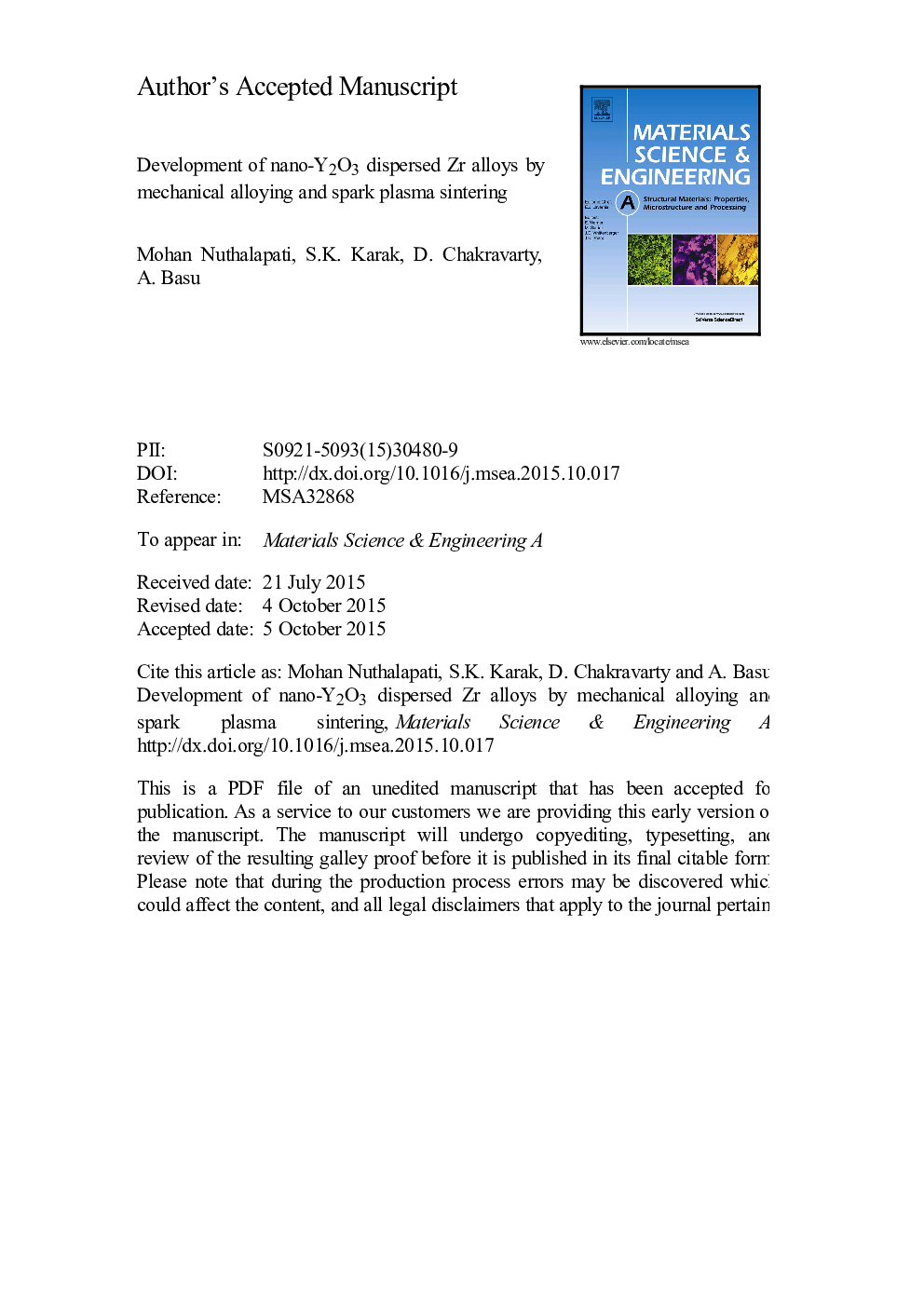| Article ID | Journal | Published Year | Pages | File Type |
|---|---|---|---|---|
| 7976315 | Materials Science and Engineering: A | 2016 | 20 Pages |
Abstract
In the present study alloy powders with nominal composition of 45.0Zr-30.0Fe-20.0Ni-5.0Mo(alloy A), 44.0Zr-30.0Fe-20.0Ni-5.0Mo-1.0(Y2O3)(alloy B) and 44.0Zr-30.0Fe-20.0Ni-4.0Mo-2.0(Y2O3)(alloy C) (in wt%) were synthesized by mechanical alloying (MA) followed by spark plasma sintering (SPS) at different temperatures (900, 950 and 1000 °C). Phase evolutions during milling and after consolidation were characterized by SEM, XRD and TEM analysis. An individual element go into solid solution with increase in milling time and after 10 h of milling complete solid solution was observed in alloy A. XRD, SEM and particle size analysis revealed an increase in lattice strain and decrease in particle and crystallite size with milling time. The final average particle size after 10 hours of milling was 10-11 μm for alloy A. TEM analysis revealed the crystallite size to be between 10 and 15 nm. TEM analysis of alloy C sample sintered at 1000 °C confirmed the presence of Mo2Zr and FeNi along with Y2O3, dispersed uniformly throughout the matrix with size 10-20 nm. Density and hardness was found to increases with sintering temperature and dispersion of Y2O3. Alloy C sintered at 1000 °C exhibits maximum hardness of 16.2 GPa which was 7-8 times higher than that of the commercially available Zr alloy. The compressive strength was increased from 820 to 1200 MPa with addition of 2 wt% of Y2O3 dispersion. The fracture surface shows mostly brittle failure, but appreciable deformation was noticed prior to fracture. The wear tests indicate similar trend as that of hardness and abrasion was the predominant wear mechanism.
Related Topics
Physical Sciences and Engineering
Materials Science
Materials Science (General)
Authors
Mohan Nuthalapati, S.K. Karak, D. Chakravarty, A. Basu,
